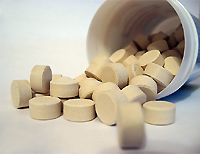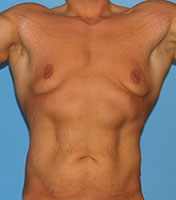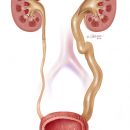Acromegaly is a severe illness, a grooming person and leading to violation of organs of organs. There are several methods for the treatment of acromegaly, which allow you to completely get rid of the disease or reduce its activity to a minimum. Read the details in the article.
Content
Acromegaly is known since ancient times. The name of the disease occurs from two Greek words «Akros» - The limb I «Megas» - big, that is, the disease at which the limbs increase. Indeed, when acromegaly changes the appearance, the features of the face are hardened, the size of the stop and brushes increases. However, she has more serious manifestations associated with violation of the internal organs. In the absence of treatment, patients do not live and 5 years. The disease is associated with the development of a pituitary tumor, which actively produces growth hormone. That is why the main task of doctors is the removal of a tumor or a decrease in blood growth hormone in other ways.
Reducing the content of growth hormone in the body is important not only for good health of the patient and reduce (disappearance) of clinical symptoms of the disease, but also to increase life expectancy. Currently, it is known that a long-term increased content of hormone growth in human blood leads to early mortality from cardiovascular, pulmonary and oncological diseases. And it is a decrease in the content of growth hormone to certain numbers in the course of treatment contributes to the restoration of normal life expectancy.
Surgical treatment of acromegaly
The surgical treatment method is to remove the pituitary tumor in a specialized neurosurgical department. This method is the most common and effective method of treatment with a given disease, since in case of complete tumor removal, the normalization of the level of growth hormone occurs very quickly, which is accompanied by a significant improvement in the well-being of patients and disappearance of disease.
The removal of the pituitary tumor must be carried out in cases where there is a violation of sight. However, complete cure from the disease in most cases is observed in patients with small (less than 10 mm) pituitary tumors that are not outside the Turkish saddle (special fox in the skull, where the pituitary is located). With larger tumors of one surgical treatment, it is not enough, and have to resort to the help of medicines.
Medical treatment of acromegaly
 The medication method of treatment is that the patient receives medicines that brake the production of growth hormone. There are currently two main groups of drug drugs for the treatment of acromegaly.
The medication method of treatment is that the patient receives medicines that brake the production of growth hormone. There are currently two main groups of drug drugs for the treatment of acromegaly.
I group - analogues of somatostatin, which are modern and most effective for today drugs for the treatment of acromegaly, especially in cases where there are contraindications to carry out a neurosurgical operation or patient refuses, as well as in older people. The overwhelming majority of patients already after the first introduction improves overall health, swelling, headache, joint pain, sweating are reduced.
As an additional method of treatment, these drugs are used in cases of lack of effect after surgical treatment, as well as after irradiation.
Group II - Advanced Analogs. Dopamine is a biologically active substance that has a property to slow down the production of growth hormone in patients with acromegaly (but not healthy people). Dose of the drug is determined per day depending on the degree of activity of the disease and sensitivity to the drug. Unfortunately, a large number of patients are not sensitive to drugs of this group. To achieve the optimal effect, large doses of drugs are required, which often causes side effects in the form of dryness in the mouth, nasal congestion, nausea, reduction of blood pressure, pain in the opposite region.
In the overwhelming majority of cases, these drugs are used as an additional method of treatment after surgical or radiation treatment, as well as in the absence of the possibility of applying somatostatin analogs.
Irradiation in the treatment of acromegaly
The radiation method of treatment is the irradiation of the gamma rays or proton bunches of the region of the pituitary. Currently, such treatment is not almost used independently, as there is a big risk of various complications. Only in exceptional cases, with the categorical refusal of the patient from all other types of treatment, this method can be applied independently, as well as additional treatment after the operation, when it does not give the desired effect.









